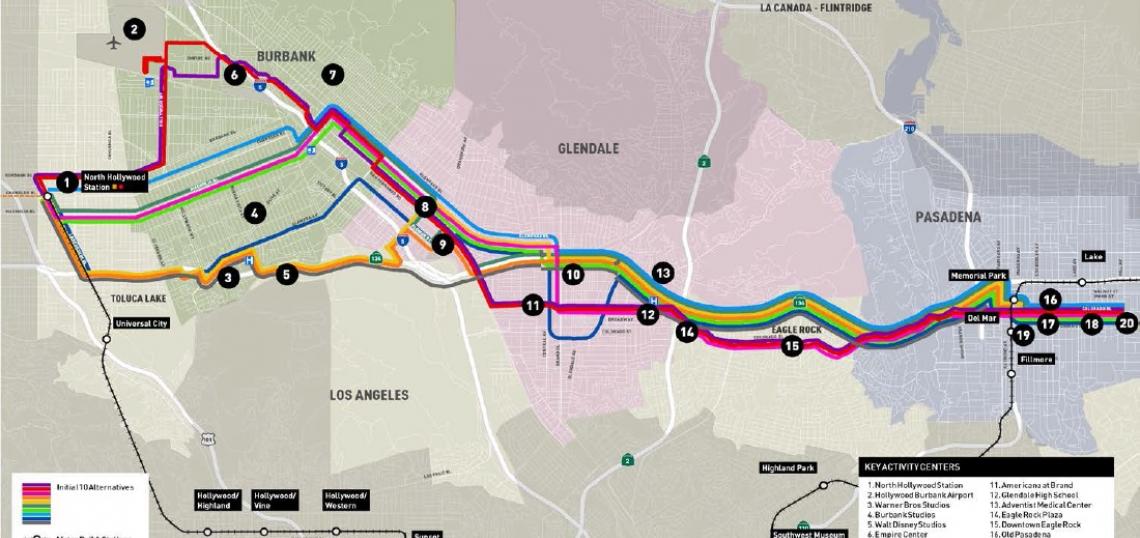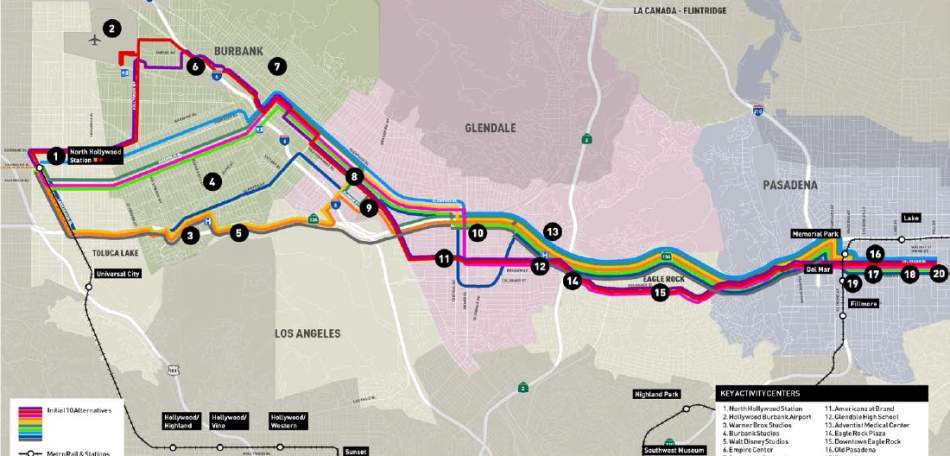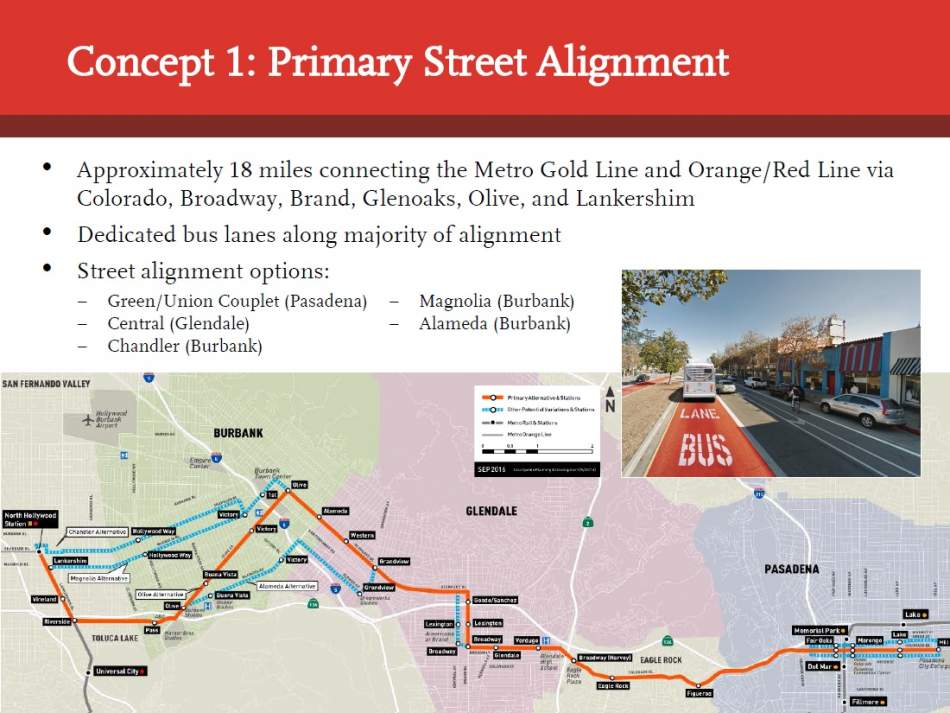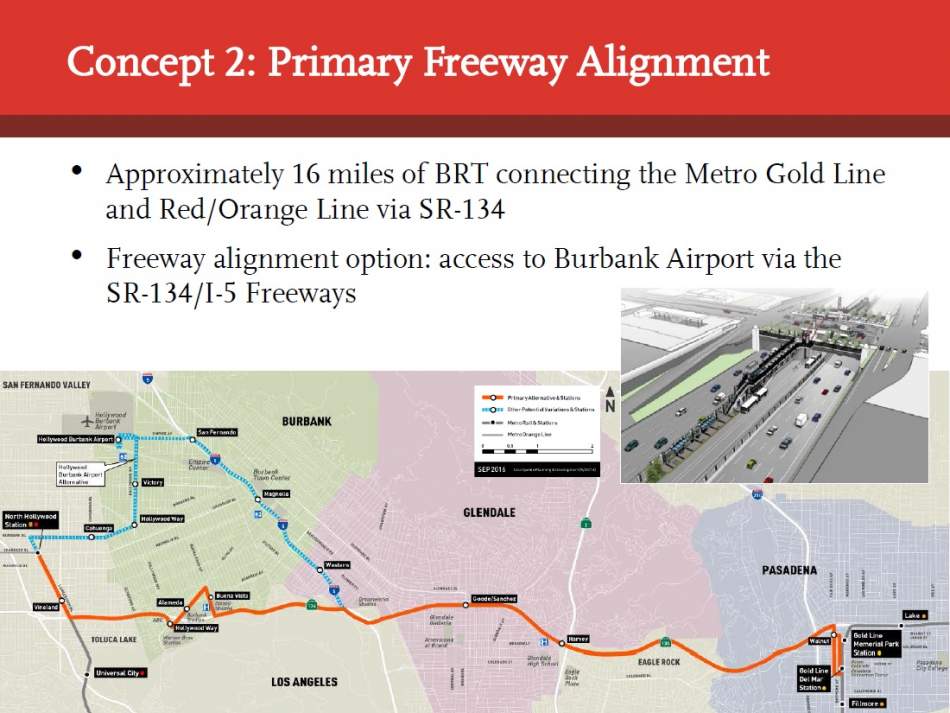This month, Metro's regional service councils will review a technical study for one of the earliest Measure M projects: a potential bus rapid transit line linking North Hollywood Station to the Gold Line in Pasadena.
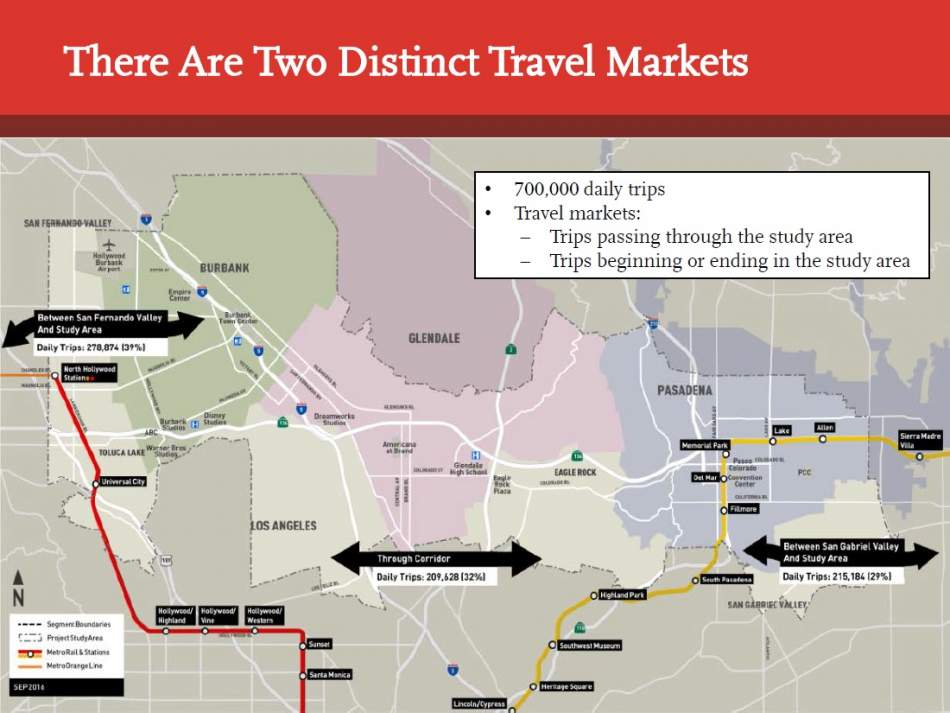
The 16-mile corridor, which also covers the cities of Burbank and Glendale, is home to numerous commercial hubs for both the San Fernando and San Gabriel Valleys. An estimated 700,000 daily trips occur within the study area, mostly in single-occupant automobiles. The project has the expressed goal of enticing some of those commuters onto transit with the offer of premium bus service, backed by $267 million in Measure M funds.
Metro kicked off its study with 10 alternative alignments, all of which roughly parallel the SR-134 freeway.
Each route was evaluated by how it would:
- Serve key activity centers, employment centers and other destinations.
- Improve connectivity to other transit services.
- Provide enhanced customer experience.Improve transit travel times.
- Offer sufficient street widths to accommodate dedicated bus lanes.
The within the study area expressed differing preferences and concerns regarding the project.
Burbank wishes to maintain the existing Chandler Boulevard bike path and minimize the loss of street parking. This lead to a preference for an alignment through the city along Olive Avenue.
Glendale similarly expressed a need for maintaining parking along its main commercial spine, Brand Boulevard, thus proposing median-running bus lanes on Glenoaks Boulevard.
Pasadena has asked that any station components along Colorado Boulevard be removable for the annual Rose Parade. Other city projects could interfere with dedicated bus lanes, although the presentation does not specify exactly what.
Conversely, the adjacent L.A. neighborhood of Eagle Rock prefers an alignment along Colorado, which serves as the community's main commercial thoroughfare.
With these factors in mind, the technical study details two conceptual alignments.
The first concept would run approximately 18 miles, mostly on city streets. Dedicated bus lanes would connect the Gold Line to the Red and Orange Lines via Colorado Boulevard, Broadway, Brand Boulevard, Glenoaks Boulevard, Olive Avenue and Lankershim Boulevard. Variations of this concept could also utilize Alameda Avenue, Magnolia Boulevard and Chandler Boulevard in Burbank; Central Avenue in Glendale; and a Union Street - Green Street couplet in Pasadena.
Metro estimates that the street-running alternative would cost between $274 and $448 million to construct and $14 million per year to maintain. The 18-mile route would carry 18,000 daily passengers by 2035, with upwards of 23 stations and an end-to-end travel time of 77 minutes.
The second concept would run 16 miles via dedicated bus lanes within the median of the SR-134 freeway. It could also allow for service to Burbank Airport by rerouting buses on to the I-5 freeway.
Construction costs would range between $123 to $246 million, in addition to $10 million in yearly maintenance. End-to-end travel times for the freeway alignment is estimated at 52 minutes, with 10,800 daily passengers by 2035 and approximately nine stations.
The technical study concludes that both concepts are feasible, but serve different market segments.
Moving forward, staff will brief elected officials this month, then present recommendations to the Metro Board in 2017. Following approval by the Board, Metro may initiative the environmental process, with the intent of breaking ground on the project by 2020 and commencing operations by 2022.
- North Hollywood to Pasadena BRT Corridor Technical Study (Metro)
- Metro Archive (Urbanize LA)




